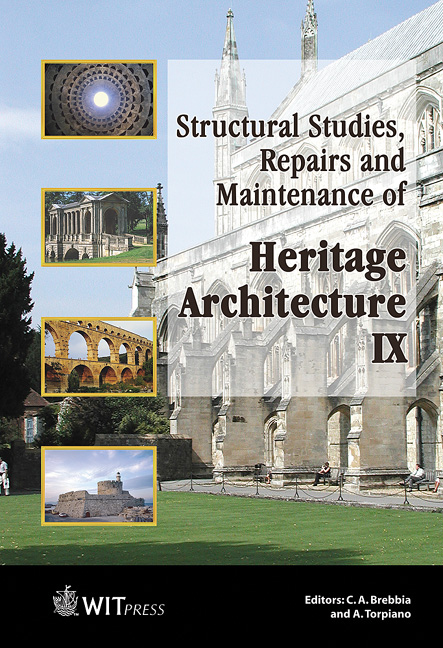The Maintenance Of Historic Iron And Steel Structures: Coping With Corrosion
Price
Free (open access)
Transaction
Volume
83
Pages
10
Published
2005
Size
599 kb
Paper DOI
10.2495/STR050521
Copyright
WIT Press
Author(s)
G. G. Nieuwmeijer
Abstract
Corrosion is the most dangerous enemy of historic iron and steel structures. After a general introduction to the structural engineering aspects of corrosion, this paper will focus on the relation between corrosion and structural detailing. To provide insight into the most sensitive aspects in and around renovation and restoration and to be able to take adequate measures it is necessary to have some knowledge of the various types of corrosion. Cast iron, wrought iron and various types of steel behave differently from each other. Close attention should be paid to corrosion, especially in the places where different types of metal are in contact with each other. External factors such as relative humidity and air pollution also play a role. Usually corrosion is promoted by inadequate structural detailing because in earlier times little was known about this process. A summary of a number of important errors is presented. It may be necessary to carry out modifications during restoration or renovation. As many structures are important for historical and cultural reasons, adaptations should always be made in an honest and sympathetic way. 1 Introduction In nature metals occur in the form of ores that consist primarily of metal oxides. The addition of adding energy reduces the ores to metals, which have a tendency to return to a condition in which there is minimal energy and thus, when nothing is done to this, to corrode. Corrosion is damage to metal caused by complex electrochemical reactions. For iron and steel this is termed rusting. Rust is a mixture of iron oxides and iron
Keywords




